Modelling of draperies
Artists' Techniques
Fabrics are modelled with highlights progressing from white mixed into the base pigment to pure white, and shaded with darker tones of the base pigment or with translucent glazes. Fully blended, directional brush strokes are combined with tiny brush strokes or dots. The resulting effect is most fluid and subtle in the images painted by the Madonna Master.
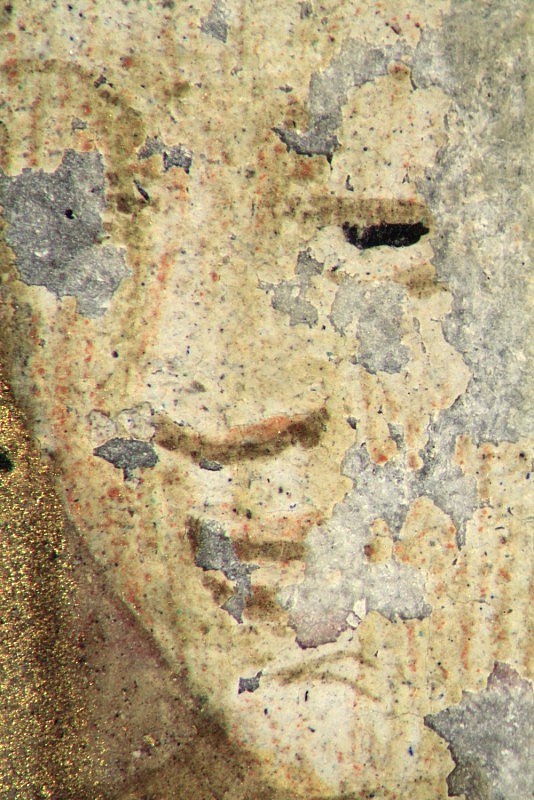
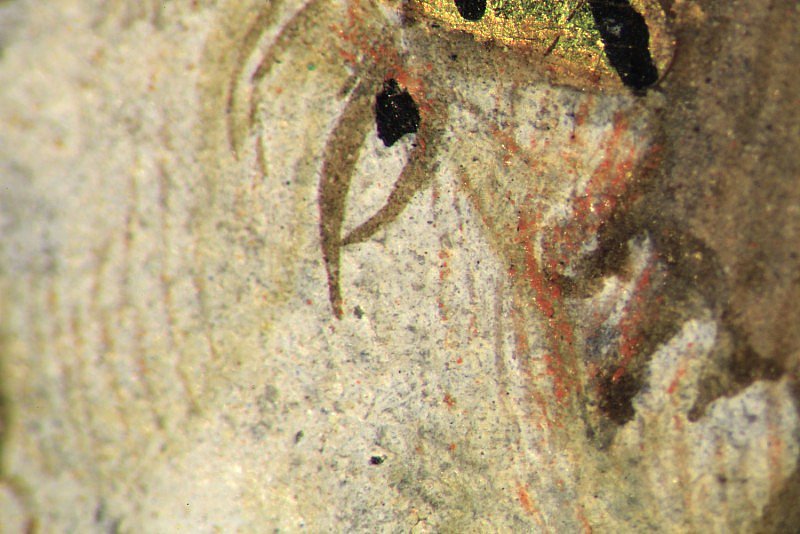
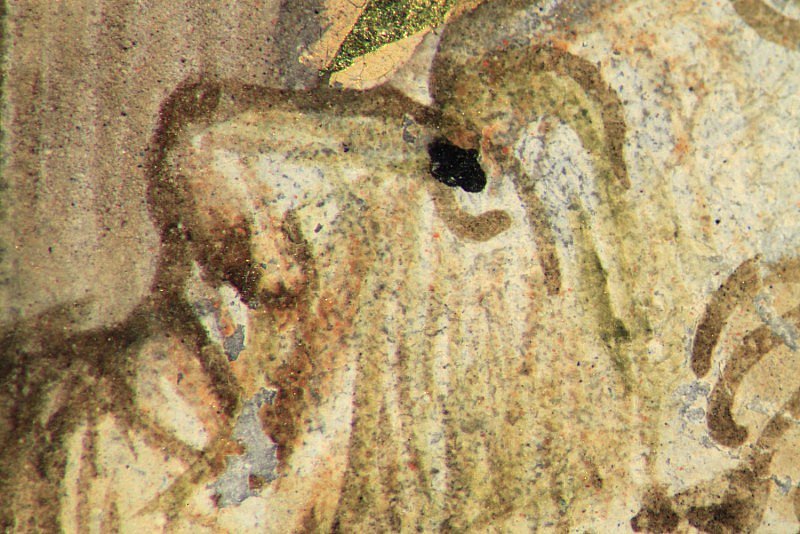
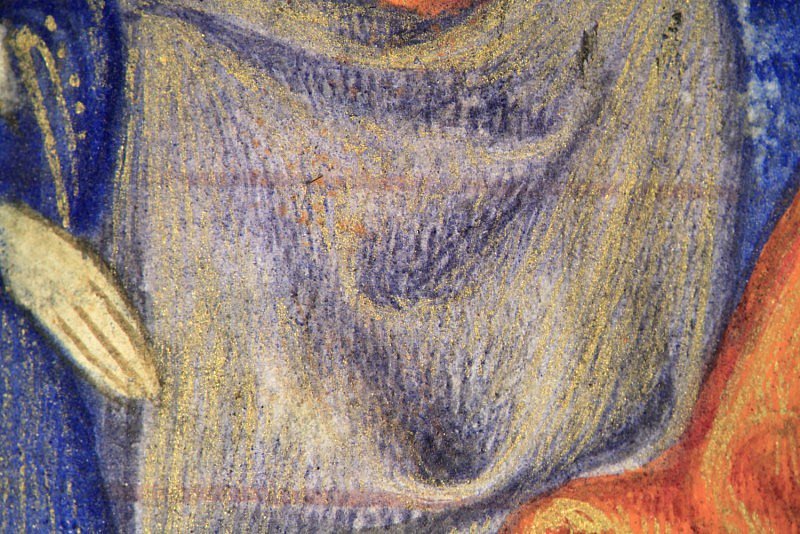
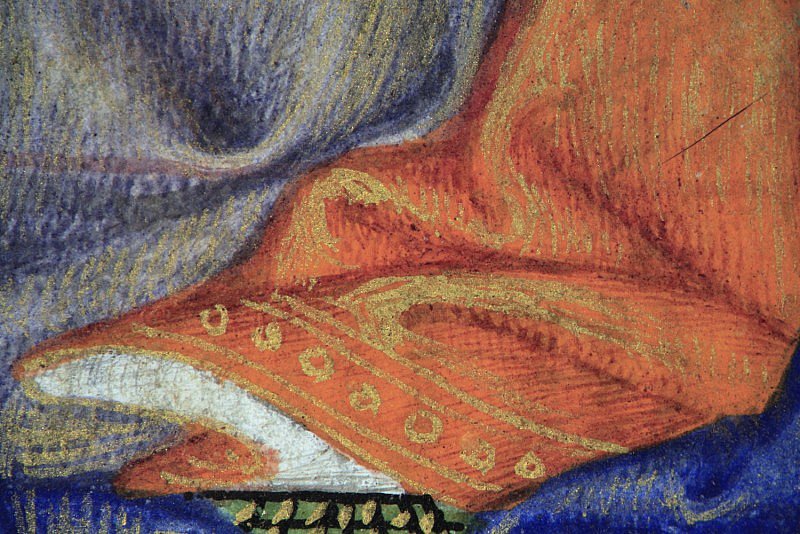
Pentecost (Hours of the Holy Spirit, Matins)
This miniature was painted by an artist who was responsible for most of the marginal images in the Pilgrimage of the Human Life cycle. His favourite lead-tin yellow pigment, which has a slightly green tinge, can be seen both in the Pentecost miniature and in the marginal image. This artist was a close associate of the Giac Master and had ready access to his designs. He replicated the Giac Master’s typical architectural setting and tiled floor, but introduced a more convincing sense of perspective in both. The arms of Isabella Stuart have been added to the border.